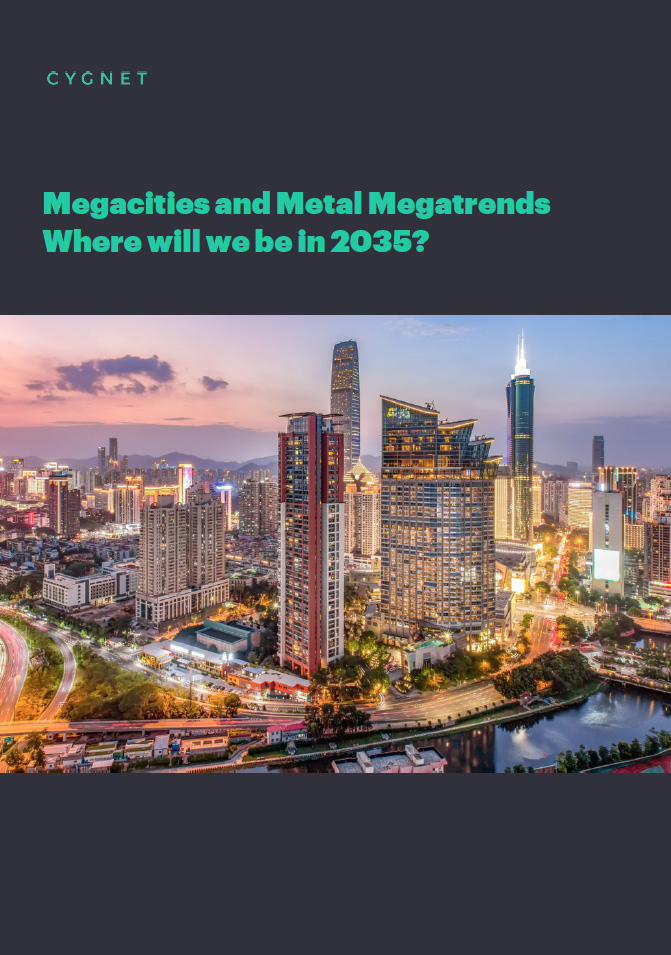The world of commodities has been transformed in the past 20 years by the rise of megacities in Asia. China has been a crucial part of this and now dominates the consumption of metals, including steel, copper and aluminium.
In our latest white paper, Metal megatrends – Where will we be in 2035?, we look ahead to 2035 to analyse and explain what is likely to come next and anticipate where the greatest growth will come from in terms of cities, countries and commodities.
The continued expansion of megacities in China and India will bring extra wealth and buying power for commodities.
By 2035 we will see a significant shift in power from West to East, as Asian cities as a group will be richer than Europe and North American cities combined. This will be driven by steady growth in large cities in China, combined with more rapid growth in medium-sized cities in India.
At a country level, similar megatrends can be seen. China will grow well from a high base, while Indian grows more quickly from a low base. Leading economic forecasters predict that US GDP will grow by just 1% from 2020 to 2035, while China should grow at 4% and India at 5%. However, both Asian countries remain relatively poor compared to the industrialised world.
In terms of GDP per capita, China rises from 35% of the US level to 50% by 2035, whereas India jumps from 12% to 23% over the same period.
Furthermore, other economic indicators for metals highlight significant catch-up potential in areas such as automotive, mobile phone use and urbanisation.
In terms of the major industrial metal markets, there is plenty of scope for optimism about the demand outlook given the current low level of development that currently existing in Asia.
Assuming the recent trend in intensity of use is maintained during our forecast period, nickel will see the fastest growth, with demand growing by 123% from 2020 to 2035. Aluminium and steel will also see significant growth of 57% and 50% respectively, with copper increasing by 26%.
Zinc lags and the impact of falling intensity results in a modest 6% increase in market size by 2035.
We believe the greatest potential for an upside surprise exists for copper. It has been lagging behind its base metal peers in recent years, but there seems to be significant scope for it to shift onto a faster growth path soon. Our confidence in this forecast is influenced by the likelihood of expanded and improved electricity grids in many parts of the world in response to shifts towards electric vehicles and renewable power.
In summary, the next 15 years will be a period of unprecedented geopolitical change. For governments, mining companies and investors alike there will be threats in these megatrends, but also immense opportunities.
Fasten your seatbelts. It’s going to be a bumpy ride.
Dan Smith, Director – Special Projects
Download a copy of the report by clicking the cover below.
Image (c) Shutterstock | HelloRF Zcool



